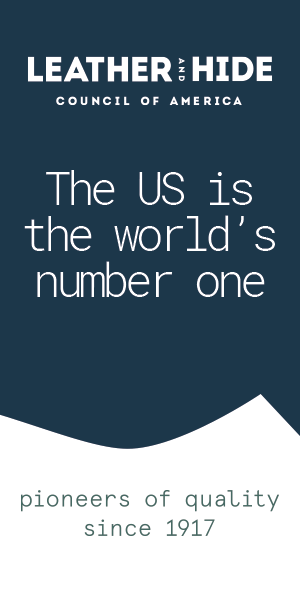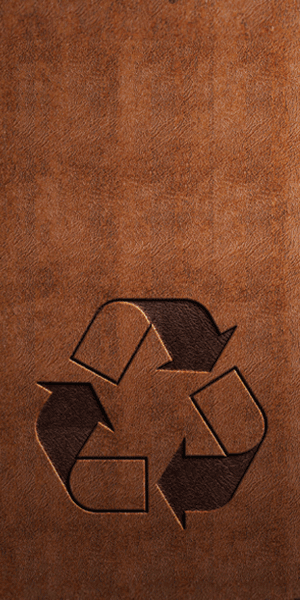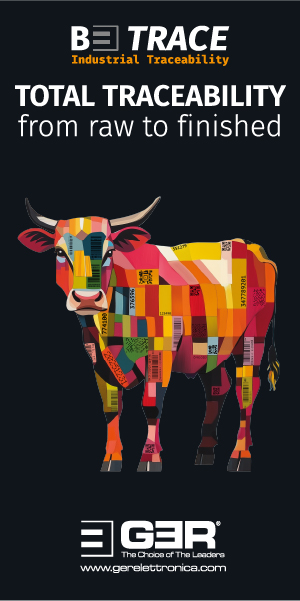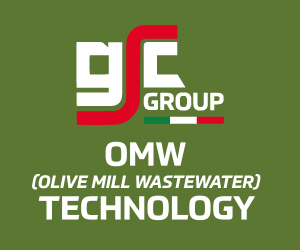Jon Clark: To plot a path beyond Covid-19

Tanning group PrimeAsia has leather manufacturing facilities in Huangjiang in China and in Ba Ria-Vung Tau in Vietnam. These tanneries currently have a combined production capacity of around 11 million square-feet of finished lifestyle and athletic leather per month, which the group supplies to dozens of global footwear brands. In this interview, its chief executive, Jon Clark, offers some reflections on the effects of the Covid-19 pandemic on PrimeAsia’s operations and on the wider leather industry.
At the start of April, with the Covid-19 pandemic spreading rapidly in all parts of the world, the managing director of the International Monetary Fund, Kristalina Georgieva, said that, for the first time ever, her organisation was witnessing “the world economy coming to a standstill”. What effects of this are you observing for the leather industry in general and PrimeAsia in particular?
We started to see significant effects of this way back in late January as it started to become known in China. We were witnessing this virus take effect in what was, at the time, just a small region of China, but it had far-reaching effects because the government took dramatic steps to close down industry. We felt those effects. The first step we took was on January 24. By the end of January our facility in China was closed down and, at that point, we were concerned about supply. It was a supply issue, because the only demand impact was in a small section of China that had retail shut down. Fast forward to April and all of a sudden it’s no longer a supply issue; it’s a global demand issue. The fact is that global retail, global consumer spending has come to a standstill. Discretionary spending on things like clothing and footwear, automobiles and the things that impact the leather business has come to a standstill. Major brands are still trying to get their heads around what this means. Everybody knows what it means today and, probably, next week, but they are really struggling to figure out what it means a month from now or two months from now because there is no concrete answer to that question and that is the bigger problem. We have a wide array of customers. Each one is a global brand. Each one is planning differently and, for us, that creates a significant issue. What we’re trying to do is plan and build in a wide margin of flexibility, because of the unknown.
The leather industry has benefited from the globalisation of our economic system. To what extent is this a case of taking the bad times as well as the good times?
Yes, but I’m not sure we can say we are paying for past sins. I have believed for some time now that regional supply chains are the trend of the future. Big manufacturing states or manufacturing blocs that have been following low labour costs forever will, ultimately, go away. There has already been a big step towards parity in costs around the world. We’re nowhere near there yet, but it’s moving in that direction. Globalisation for sneakers and for clothing is fine. But for critical goods: medicines, medical hardware, security, software and so on, I believe that every country in the world is learning a lesson here. They need a supply chain that is national instead of global. Countries need to take care of their own citizens before they are able to take care of the rest of the world. We would be in a much better position if all of the developed countries in the world were in a position to take care of themselves because that would lead to an ability to take care of those who are not so fortunate. Right now, we can’t do that. Everyone is struggling to take care of their own needs and we haven’t seen the effect of this yet on some of the countries in Africa, for instance. We don’t know what’s going to happen in India or what’s going to happen in Bangladesh. There are countries that would normally receive a helping hand from the West, but we are using all of our resources. We are going to see a change. For mass manufacturing, we’ve been watching that change for the last four years as things have diluted out of China into other Pacific Rim countries. I think we are going to see some strong legislation from countries in the West in terms of what business or what trade they will do with China, but I think we will see a continued dilution of [the importance of] China, especially for those critical goods.
What will global brands look like after this?
Human nature, in the midst of crisis, pushes long-term solutions down the road. It’s very difficult to be in a position of situational management in a crisis and, at the same time, solve your longer-term problems. The global brands are global brands for a reason. They have smart people who built those brands and those supply chains. But just like anything else, I think some are further along in terms of having longer-term supply chain pathways. What I would suggest is that this will increase the pace of change. In our business, many of our customers had already been diluting their Chinese export footprint for the last four years and, in some cases, for a little bit longer. My sense is that this will continue, but at a much faster pace now. And I think this will open minds on regional manufacturing, not for everything, but for specialty product, the product that is different, the product that is unique. I truly believe that North America, two years from now or three years from now, will be supplied footwear by North America at a much larger percentage than it is currently. Will it be a majority? Probably not, but a bigger stake will be country-for-country or region-for-region supply chains.
Please reflect on how business was going before this crisis.
At the end of 2019, PrimeAsia was doing very well. We ended the year up 18% to 20% year on year. We shipped about 110 million square-feet of leather. It was our third- or fourth-best year for shipments in the [almost 25-year] history of the company. We had just completed a massive investment in our expansion in Vietnam and we were starting to see those efficiencies. So, that was very positive. For 2020, our plan was to be up at around 119 million square-feet, or 9% growth. Since this happened, we have had to update our guidance several times, each time decreasing the outlook for 2020. This is a short-term devastating blow for us. There’s a big difference between a short-term devastating blow and a long-term devastating blow. We strongly believe we will get through this, that we can right-size to this situation and come back out on the other side and right-size towards clawing back to whatever ‘normal’ happens to look like a year from now. We felt really good about what was going on, we were spending a lot of money on our investments, putting back into our business with a focus on efficiency, energy management, sustainability programmes, automation and we were getting to a point in the first quarter of 2020 when things were just starting to roll. This will dramatically affect our spending in 2021. We had more investments to take place, in China and in Vietnam. This will slow these projects down. I’m still confident we will pick up from where we left off, but without a global ‘get-back-to-work order’, which we are not going to have, the planning is very difficult.
Please sum up what PrimeAsia learned as long ago as February about the coronavirus and how to cope with it.
The most important thing is to stick to your core values. The first thing that we said, from day one, and the first thing that we put out in a news release to our stakeholders, was that our first priority was to protect our people. At the time, that had to do with our personnel in China or our personnel who were moving around the world, and it had to do with their physical health. You have to work to protect your people financially as well, security if you will. Obviously, there are a lot of hard choices that have to be made, but there are different ways to deal with this. There is a difference between lay-offs, furloughs, cutting back on overtime and looking at base-pay. There’s a whole host of different ways that you could go about right-sizing for this. From our perspective we try to keep the welfare of our people as the first marker of whether we are doing it right or wrong. The second part is that we learned early on that, in this particular environment, we needed to stay current, globally, with what’s going on. Our crystal ball didn’t work, just like the rest of the world’s crystal ball didn’t work. If you had told me in February or at the end of January that we would be where we are today, forget about it. We didn’t see that. We decided early on that this was a situational management stance that we had to take. Situational management is not something that I like to do. That’s not how we manage. We manage based on our best viewpoint, and manage to that viewpoint. In this case, we need to manage situationally and make sure that we build flex into every decision we make. We’re doing what we need to do, short term, to make sure we come out of this long term. The last pillar is communication. We also said early on that we were going to let not just our employees and our management group, but our entire stakeholder supply chain, through to customers, understand what we are doing every step of the way. I believe that transparency is always the right choice.
What is the situation at the moment for your tanneries in China and Vietnam as they emerge from the worst of the crisis locally?
We were back at 100% capacity at PrimeAsia China by March 1. We had a month before it was clear that the virus was a global phenomenon. We saw demand domestically in China fall almost to zero for a 60-day period. You get towards the end of March and start to see daylight, you see some activity coming back, some demand, China for China footwear and leather demand. But by the second week in March we started to see that it was becoming significantly more than just a China demand issue and that it was going to become a global demand issue. That was the sledge-hammer to the head right there. During that period of time, we had to update our forecast four separate times. We couldn’t do it fast enough. Each week brought a new realisation. The real one for us was when customers started quoting 65% decreases in sales of athletic footwear globally, and from there it’s become worse. That was the line in the sand. This is unprecedented; we need to quickly update our plan and get extraordinarily aggressive on how we’re going to deal with this.
What will the global leather industry look like when the Covid-19 crisis is finally over for big companies like PrimeAsia?
It’s extraordinarily difficult to say what we’re going to look like in a post-Covid-19 world. One of the most important things is to have the belief that you’re going to get through to the other side. You don’t need to know what the timeframe is, but you have to have the belief, and you also need to understand that there are certain things that you need to be able to do to manage that time when you are basically in ‘crisis’. I don’t know everyone’s situation. What I can tell you, though, is that we have reached out to our peers to see what we can do to help. We want to support the leather industry and the greater supply chain. We are there to help because the reality of this is that larger companies have an advantage, and it’s not because of demand. It’s because the leather industry is brutal and unforgiving. You have three-, four-, five-month supply chain for raw material and chemicals that is cash-flow related. And every time it is cash-flow that closes a company. If you think about the leather industry, it’s one of those industries that, basically, need to invest in raw material and chemicals, which, at this moment in time, is close to 62% of your cost, without an order. Other industries may have the luxury of being able to wait for an order before they do this or do that; not our industry. Without cash-flow or credit lines, business becomes very, very challenging.
What do you think it will look like for the vast majority of companies in the leather value chain, who are much smaller?
In my mind, there will be, unfortunately, many, many smaller companies throughout the supply chain that struggle to keep up, simply from a cash-flow and credit-line standpoint, and that will undoubtedly fail. That will result in more consolidation. Those that do survive, that have the means to make it through, they’re not any smarter. Honestly, I’ve got to tell you. The difference between a large company and a small company has nothing to do with brains or intelligence. It has to do with the infrastructure of finance that will allow people to move on. Some of these really good people that have had companies for generations, I think we will see them disappear. At best, perhaps, we may see them get bought up or helped out by some others. I think it’s inevitable that we will see that situation play out. And the question becomes, again: the longer this goes on, the more strain there will be on these smaller businesses. And it’s the same thing outside the leather industry. If you look at some of the relief packages that America and other countries have put in place, they’re all focused on small businesses. These are the guys that need the help. These are the guys that don’t have more than 30 days of cash-flow to pay pay-roll and rent and all of that. And then, in our industry, to put on that extra burden of a pipeline of raw materials is just that much harder. I worry about this constantly. It’s not good for our industry. Consolidation is not necessarily good for our industry. We have a tremendous amount of innovation, ideas and intellectual strength coming from this vast number of small companies. We would be in a very different place if we lost half of that. If this goes on for six months, I think it’s very real that we could be in that position. If it goes on for two months and consumers start to spend again, I think the vast majority will have a better chance of making it. Leather as a material has been challenged over the last few years anyway. Smaller companies have been challenged just because of this directional change from leather to more man-made synthetics. There’s never been a greater need for our industry to come together and to speak with a single voice and carry on down that road of education and promotion and all of these different initiatives. We’re going to need that. We’re going to need to have all hands on deck to promote our product. I’m optimistic that we can do that. I really am. We’re better together than separate. We’ll find a path. It’s not going to be easy, but we’ll find a path.
The Leather Leaders interviews are also available in audio format, along with a wide variety of World Leather podcasts. Please search for World Leather on Spotify, Google Podcasts, Apple Podcasts or Medium to enjoy them all.






























